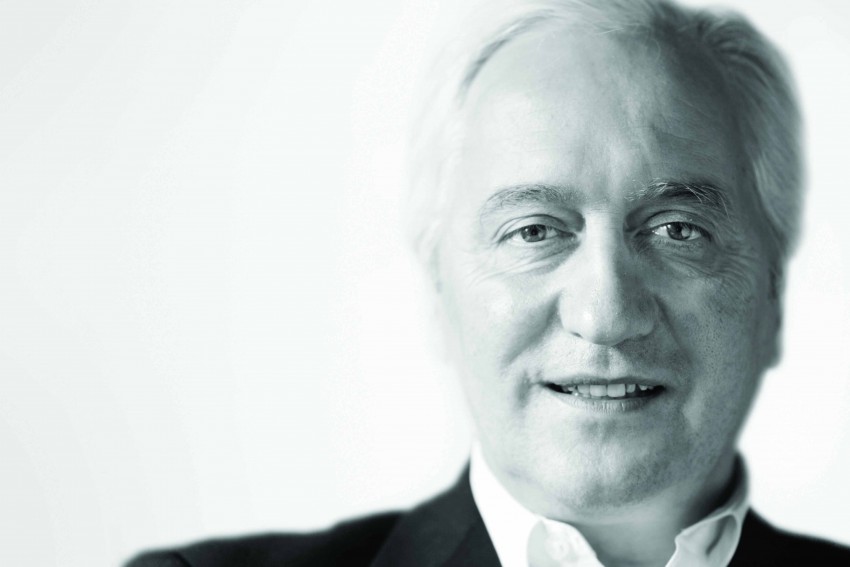Harnessing Adelaide’s Collective Imagination

Creativity, connectivity and the cultural dimension – former Thinker-in-Residence Charles Landry recently returned to Adelaide to take its creative pulse.
Creativity, connectivity and the cultural dimension – former Thinker-in-Residence Charles Landry recently returned to Adelaide to take its creative pulse.
When Landry first floated the concept of the ‘creative city’ in the early 1990s, he had no idea it would catch on rather like a global movement. “All I was concerned about was the way the world was changing dramatically,” he explains. “I was asking how do you create the conditions to think, plan and act with imagination, and how do you look at your resources more widely, in terms of your potential.“ According to Landry, the arts world, over time, grabbed the notion and said, “You must be talking about us”. He does, however, acknowledge that the cultural sector can play a larger-than-life role in contributing to the wider creative economy, which encompasses intellectual and industrial creativity, as well as social innovation. But there is also a danger that broad definitions of the ‘creative city’ can become meaningless, hollowed-out and empty. Landry therefore wants his ‘Creative City Index’ used as a tool for empowerment, rather than as a simplistic score card. The central question is not whether one city is more creative or less creative than the others. It is instead, “Are you doing as well as one would expect you to do, given your context and constraints… That is, are you punching above your weight?” While the overall tone of Landry’s latest report card on Adelaide reflects a more optimistic ‘can do’ city than the one he found here during his residency in 2003, it also reads ‘could do better’ on several fronts. Undertaken on behalf of the State Government, Adelaide City Council and the City of Playford, the audit involved local urban strategists Margaret Caust and Richard Brecknock in gathering 400 survey responses, as well as holding workshops, focus groups and a series of strategic conversations with over 100 people from the public and private sectors. In doing so, Adelaide finds itself part of a growing comparative global data set of creative cities that are highlighting and sharing global good practice. Bilbao, Cardiff, Ghent, Helsinki and Taipei are among 18 cities that provide a spectrum on which various ‘domains’ within a ‘creative eco-system’ can be explored, assessed and compared. These domains span a city’s ability to: (i) identify and nurture creativity through education and the development of talent; (ii) enable and support creativity through the political and public framework, and through strategic leadership and vision; (iii) exploit and harness creativity through entrepreneurship, innovation, communication and collaboration between different sectors; and (iv) live and express creativity in distinct and diverse ways. The fourth domain encompasses the relatively intangible concepts of ‘liveability’, ‘wellbeing’ and ‘distinctiveness’. Not surprisingly Adelaide rates above average on those fronts. We ‘could do better’ at innovation and collaboration between the ‘quadruple helix’ of the public and private sectors, research institutions and members of the community (where we are behind the highest scoring cities of Helsinki, Ghent and Bilbao). And we score below average when it comes to nurturing creativity, entrepreneurship and strategic leadership. The observations and commentary in Landry’s report illuminate its qualitative data. Adelaide’s high level of liveability becomes a threat when it encourages a false sense of complacency. Our generational family businesses can find it difficult to globalise and operate at scale. We are collegiate rather than collaborative. Our isolation turns us into a portal through which migrants leave faster than they arrive. Our imported festival culture diverts scarce resources away from nurturing homegrown talent. We blame government for a lack of leadership when we should be providing it ourselves. There is an awareness of a need to adapt to change but no sense of urgency to do so. We have a history of innovative thinking and responding to our challenging circumstances, but we need to somehow reactivate that innovative DNA. According to Landry, urban development is these days more about psychology than land-use planning. How a city feels about itself, its attitudes and characteristics shape its prospects. In reflecting on itself, Adelaide has collectively begun to go through a shift. It is starting to appreciate that a city can create its own opportunities. The new ‘can do’ atmosphere among young entrepreneurs will increasingly determine our overall vitality and chances of becoming compelling, viable and competitive. “Adelaide, like all major cities world-wide, is in the midst of significant transition,” Landry observes. With traditional manufacturing hollowing out, new forms of wealth creation are emerging. “Adelaide needs to understand the deeper trends and dynamics now shaping cities and how it can make these work in its favour, given its geographic and historic context,” he adds. “Greater Adelaide needs a mechanism for integrated thinking so that the wider city can plan and act with imagination. Changing mindsets is not a quick fix and so this must go beyond the electoral cycle,” he concludes. One can’t help but call to mind just such a mechanism, which unfortunately failed to outlive its electoral cycle. Perhaps we should consider inviting back another former Thinker-in-Residence (Professor Laura Lee), to reactivate the Integrated Design Commission, and get us back on the creative track. Image: Charles Landry